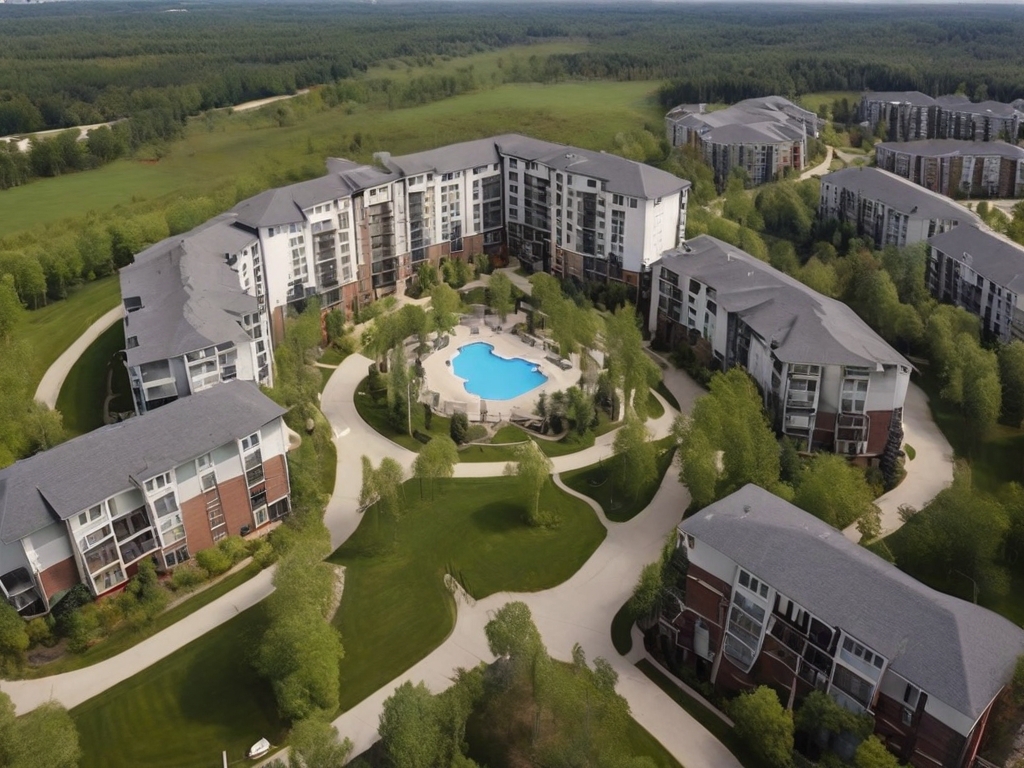Investing in multi-family real estate represents a unique and potentially lucrative venture in the world of property investments. Unlike single-family homes, multi-family properties, ranging from duplexes to large apartment complexes, offer investors an opportunity to generate significant rental income from multiple units under a single roof. This sector of real estate not only appeals to seasoned investors but also attracts newcomers looking for a scalable and robust investment strategy.
At its core, the allure of multi-family properties lies in their capacity to provide a steady stream of passive income. These properties typically garner higher total rents compared to single-family units, given the sheer number of tenants. Additionally, multi-family investments often come with the perk of diversification within a single property, mitigating risks associated with tenant turnover. This type of investment also aligns well with the growing trend of urbanization and the increasing demand for rental housing in densely populated areas.

However, the journey into multi-family real estate is not without its challenges. It demands a comprehensive understanding of market trends, financing options, and property management. The aim of this article is to provide a balanced perspective, delving into the financial and operational aspects of investing in multi-family properties. By examining both the potential rewards and inherent risks, this article seeks to equip potential investors with the knowledge needed to make informed decisions.
As we venture deeper into the world of multi-family real estate, we will explore the financial benefits, understand the risks, compare it with other investment types, and finally provide guidance on making a calculated investment decision. Whether you are a first-time investor or a seasoned professional, understanding these elements is crucial for navigating the complex landscape of multi-family real estate investment.
Analyzing the Financial Benefits
1. Rental Income: A Steady Cash Flow
Multi-family properties stand out in the real estate market primarily due to their ability to generate consistent and substantial rental income. This is a direct result of multiple units being leased out, ensuring a continuous cash flow even if one or two units become temporarily vacant. Compared to single-family investments, where a single vacancy means a total loss of rental income, multi-family properties offer a cushion against total revenue loss.
2. Economies of Scale: Cost Efficiency in Operations
The operational costs of multi-family properties are relatively lower on a per-unit basis due to economies of scale. Maintenance, landscaping, and repairs across multiple units can often be managed more efficiently, leading to reduced expenses and increased net operating income. Bulk purchases for maintenance supplies or contracting for multiple units can also lead to significant cost savings.
3. Scalability: Growth in Investment Portfolio
For investors looking to expand their real estate portfolio, multi-family properties offer a scalable investment path. Acquiring a multi-family property means adding multiple units to your portfolio in one transaction, a more efficient approach compared to purchasing several single-family homes. This scalability is a huge advantage for investors aiming to grow their real estate holdings more rapidly.

4. Tax Advantages: Maximizing Returns
Investing in multi-family real estate comes with notable tax benefits. Depreciation, which is a non-cash expense, can offset rental income, thus reducing taxable income. Additionally, investors can also deduct expenses related to property management, maintenance, property taxes, and mortgage interest, further lowering the tax burden. These tax advantages can significantly improve the overall return on investment.
5. Appreciation Potential: Long-Term Value Increase
While the primary income from multi-family properties is rental income, these properties also have the potential for appreciation in value over time. Factors such as strategic location, improvements made to the property, and overall market conditions can lead to an increase in the property’s value, offering investors an opportunity for a substantial return on investment upon sale.
Understanding the Risks and Challenges
1. Management Complexities
Managing a multi-family property is more intricate than dealing with single-family units. It involves handling multiple tenants, addressing diverse maintenance issues, and ensuring efficient operation of common areas. This can be time-consuming and requires a robust system or a skilled property management team, adding to the operational costs.
2. Higher Initial Investment and Financing Complexities
Multi-family properties typically require a higher initial investment compared to single-family homes. This can be a significant barrier to entry for some investors. Additionally, financing multi-family properties often involves more complex procedures and stringent requirements, demanding a deeper understanding of commercial real estate financing. Those investors are recommended to also looking into CHMC financing and loans programs.
3. Market Sensitivity and Economic Fluctuations
The performance of multi-family investments is closely tied to the economic environment. Factors such as employment rates, local economic health, and interest rates can significantly impact rental demand and property values. In times of economic downturn, multi-family properties might face higher vacancy rates and reduced rental income.

4. Tenant Turnover and Vacancy Risks
While having multiple units provides a buffer against complete vacancy, managing tenant turnover remains a challenge. Frequent tenant changes can lead to increased costs in terms of marketing, tenant screening, and property refurbishment. Ensuring a stable tenant base requires effective tenant relations and property management strategies.
5. Regulatory and Legal Challenges
Investors in multi-family properties must navigate various local regulations, including zoning laws, building codes, and landlord-tenant laws. Non-compliance can lead to legal challenges and financial penalties. It is essential for investors to be well-versed in these regulations to avoid potential legal issues.
Comparative Analysis with Other Investment Types
1. Multi-Family vs. Single-Family Real Estate
When comparing multi-family properties to single-family homes, the former typically offers higher income potential due to multiple rental units. However, single-family properties are often easier to manage and might appeal to a different tenant demographic. Single-family homes can also be more liquid in terms of resale, as they cater to a broader market including both investors and homebuyers.
2. Multi-Family Real Estate vs. Commercial Properties
Commercial properties, such as office spaces or retail units, can offer higher returns but are also more sensitive to economic cycles. Multi-family properties, on the other hand, tend to have more stable demand as housing is a basic need. However, commercial leases are usually longer-term, providing more stability in terms of tenant turnover.
3. Multi-Family Investments vs. Stock Market
Investing in the stock market can provide higher liquidity and potentially higher returns over the short term. However, it’s often more volatile compared to real estate investments. Multi-family real estate offers a tangible asset, steady cash flow through rental income, and potential tax advantages that are less prevalent in stock market investments.

4. Real Estate Investment Trusts (REITs) vs. Direct Property Investment
Investing in a Real Estate Investment Trust (REIT) allows for exposure to real estate with the liquidity of a stock investment. However, direct investment in multi-family properties provides more control over the investment, potential for higher income through active management, and direct tax benefits.
5. Multi-Family Properties vs. Bonds
Bonds are generally considered lower risk and offer fixed returns, but the returns are usually lower compared to real estate investments. Multi-family properties can offer higher yields and capital appreciation, but with increased risk and management requirements.
Making an Informed Decision
1. Market Research and Location Analysis
Successful investment in multi-family properties begins with thorough market research. Understanding local real estate trends, demographic shifts, and economic factors is crucial. Location is a key determinant in real estate; properties in areas with growing employment, good schools, and amenities are likely to have higher demand and value appreciation.
2. Financial Due Diligence
Before investing, it’s essential to conduct a detailed financial analysis. This includes evaluating the property’s income potential, operating expenses, and cash flow projections. Understanding financing options and their implications, such as interest rates and loan terms, is also vital.
3. Building a Competent Team
Given the complexities involved, having a team of experienced professionals can be invaluable. This team might include a real estate agent specializing in multi-family properties, a property manager, a lawyer, and a financial advisor. Their expertise can guide investment decisions and operational management.

4. Risk Management Strategies
Investors should have strategies in place to mitigate risks. This includes having a reserve fund for unexpected expenses, adequate insurance coverage, and effective tenant screening processes. Diversifying investments can also reduce the overall risk. Having tenant hold tenant insurance may also be a great wise to minimize risk.
5. Long-Term Perspective and Exit Strategy
Multi-family real estate investing should be viewed with a long-term perspective. Market fluctuations are normal, and a long-term view can ride out temporary downturns. Additionally, having a clear exit strategy is important for realizing the investment’s full potential, whether it’s through selling at a market high or refinancing to leverage equity.
Balancing Opportunities and Risks in Multi-Family Investments
In summary, multi-family real estate presents a compelling investment opportunity with its potential for robust rental income, tax benefits, and value appreciation. However, it also demands careful consideration of the associated risks and complexities. From management challenges to market sensitivities, investors need to be well-prepared and informed.
The key to success lies in thorough market research, financial diligence, and assembling a skilled team for guidance and management. Understanding the nuances of this investment type and having a long-term strategy will help in navigating the ups and downs of the real estate market.
As with any investment, there is no one-size-fits-all approach in multi-family real estate. Each investor’s goals, resources, and risk tolerance are unique. Therefore, it is crucial to weigh the benefits against the potential drawbacks carefully. By doing so, investors can make informed decisions that align with their investment objectives and financial plans.
Multi-family real estate investment is not just about buying properties; it’s about building a future. With the right approach, it can be a path to financial growth and stability.
